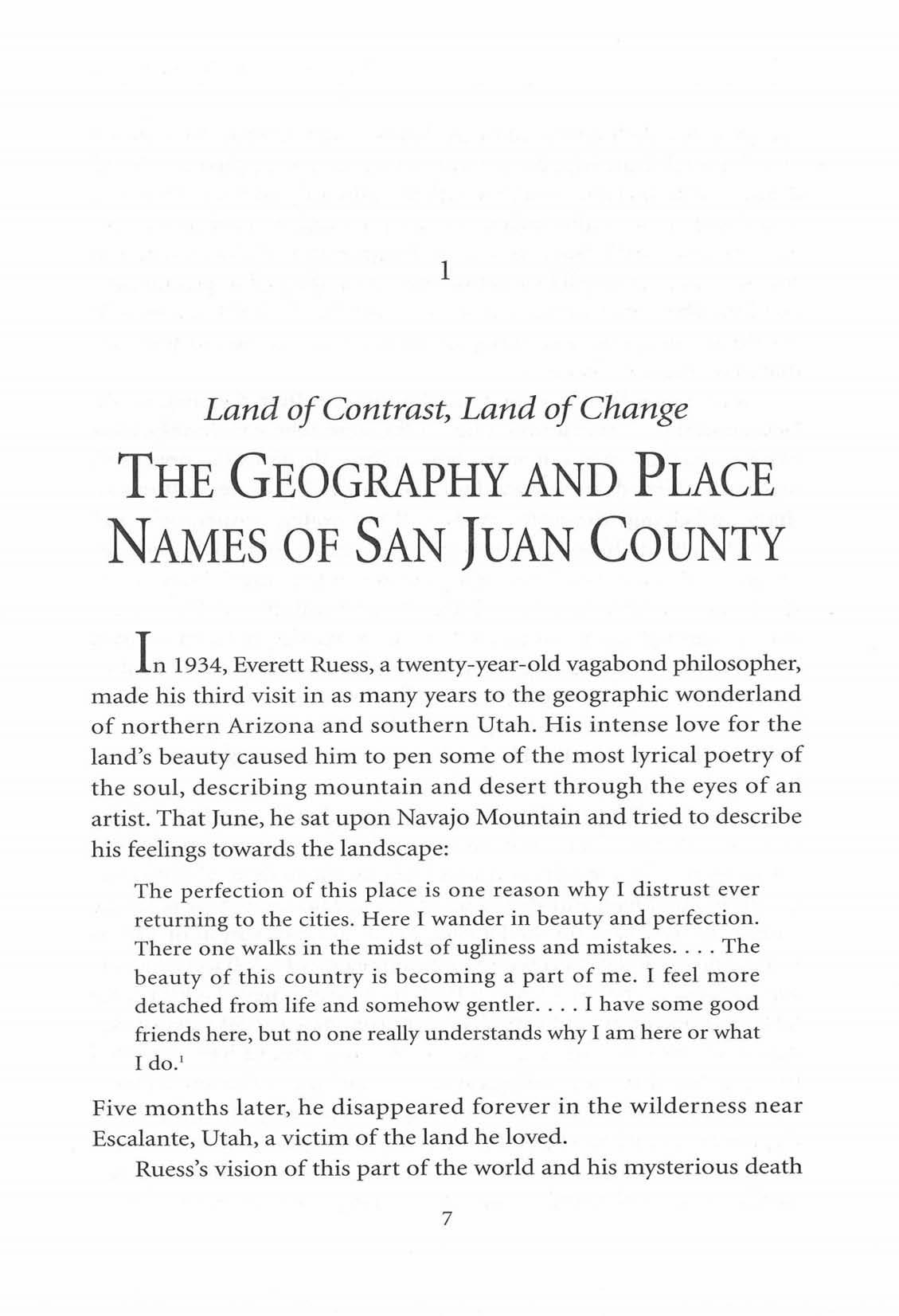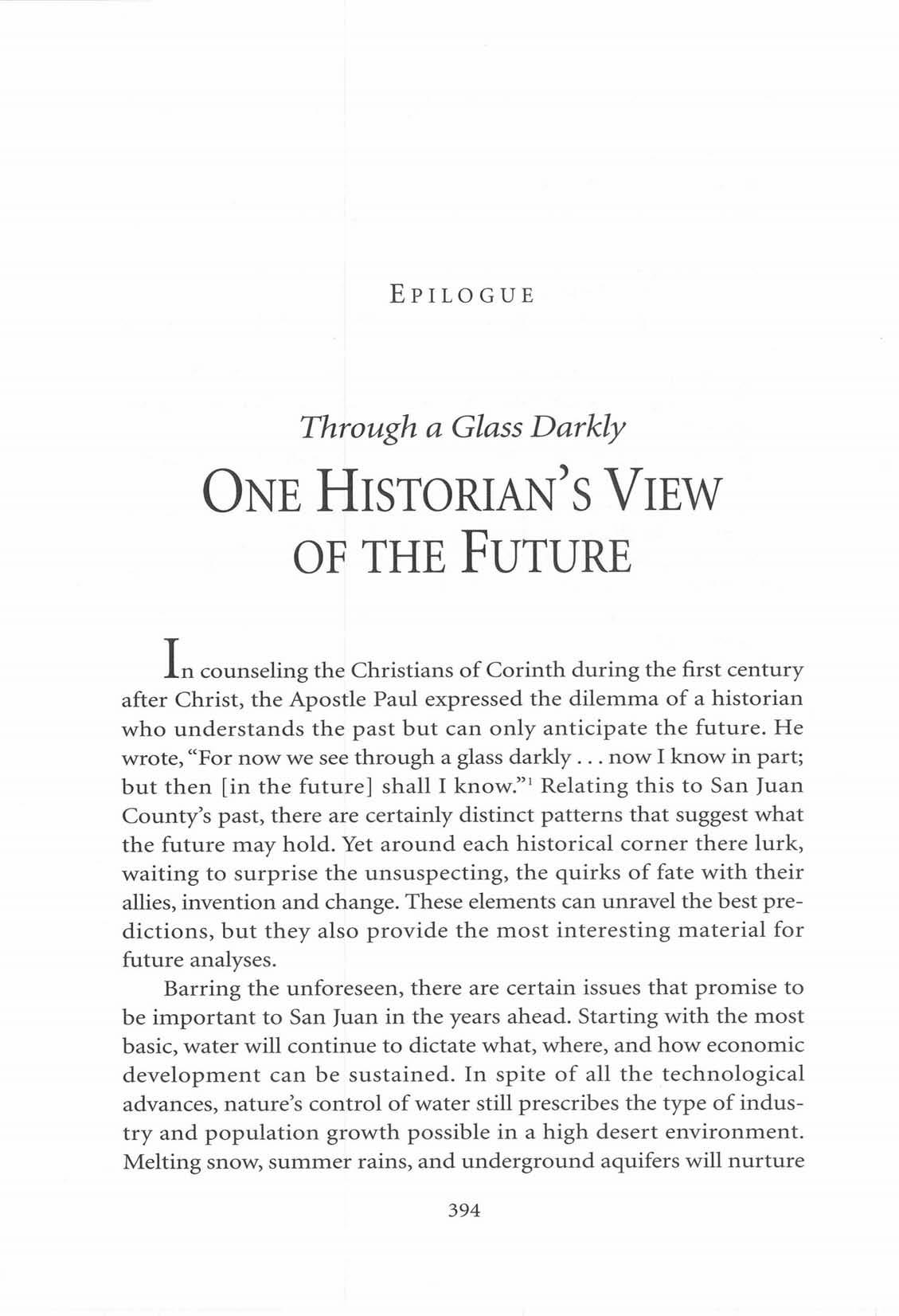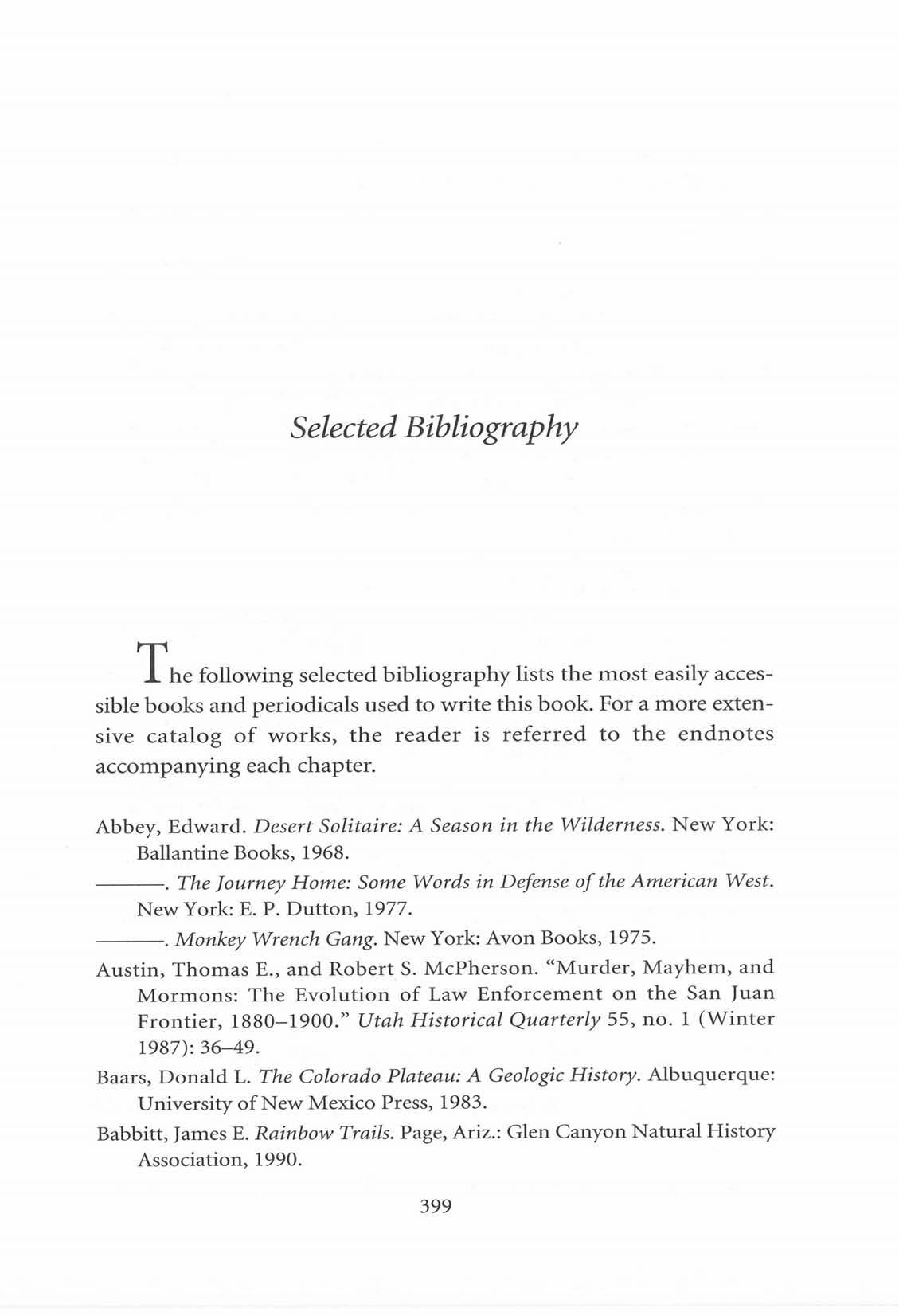From "Blank Spot" to "Sagebrush Rebellion"
'HE KISE OF PEDERAL T
I
UAN
COUNTY
he discovery of San Juan-or at least the southern part of itoccurred in the summer of 1933. At any rate, that is what a San Juan Record headline intimated, announcing that the "blank spot" was finally going to be "explored by California."' Teams of specialists from many universities, including Stanford, Cornell, Princeton, Illinois, Minnesota, Pittsburgh, and others, descended on the Monument Valley-Rainbow Bridge area to record its geology, archaeology, ethnology, flora, fauna, and topography. The ultimate goal was to make it possible for the government to "reach a decision as to which parts of this vast wilderness, if any, are of outstanding significance . . . [in order to] form the basis for any plans which may be projected for the future administration of the area."2To the Navajos, Paiutes, Utes, and some of the local whites, this whole exercise must have seemed a silly formality about something with which they were intimately familiar. Yet there were some important things to be learned from this undertaking. The intent was to acquire knowledge, but for what purpose? From a local perspective, San Juan residents were more concerned about surviving the Depression than about what kinds of





















